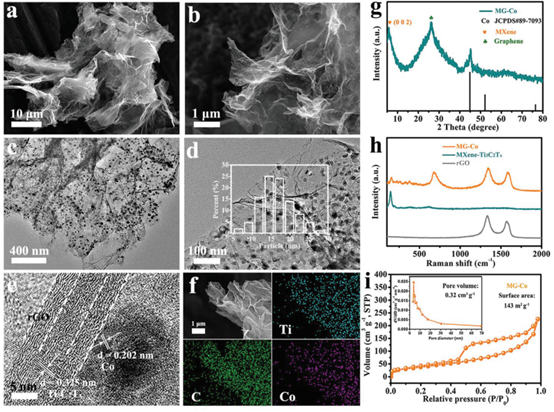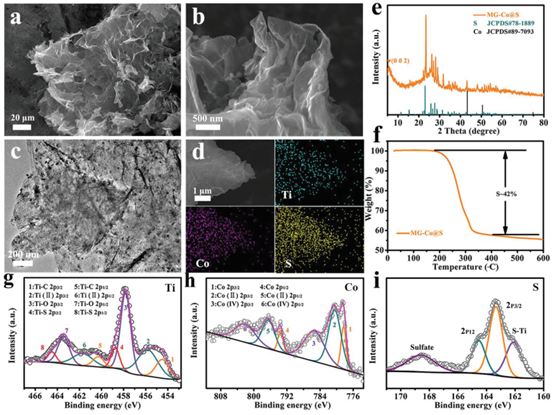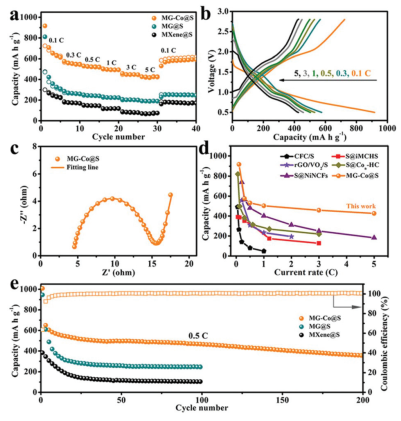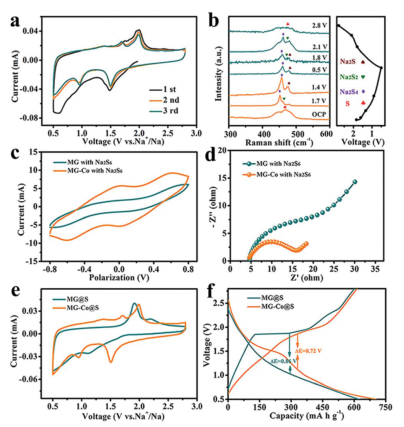已传文件:photo/1631586161.png
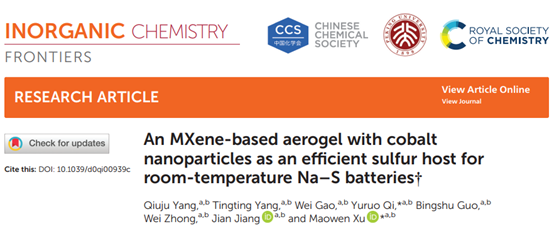
Research Background
Rechargeable lithium-ion batteries are widely used in electronic devices and electric vehicles due to their higher energy/power density. However, considering the shortage of lithium resources and the unbalanced distribution on a global scale, the application of lithium batteries in large-scale energy storage systems is greatly restricted. The room temperature Na-S battery has attracted the attention of many researchers because of its advantages such as low cost, abundant resources, (rich in sodium and sulfur), and sufficient energy density. However, the development of Na-S batteries still has many aspects that need to be worked hard. The most important thing is that the shuttle effect of sodium polysulfide (Na2Sx, x in 4~8) is uncontrollable, which leads to the low utilization rate of sulfur and irreversible capacity attenuation.
Recently, as a new type of two-dimensional material, MXenes has received extensive attention in many application fields, especially in the field of energy storage, thanks to its unique layered structure and electronic properties. Especially Ti3C2Tx, as one of the most in-depth researched MXene materials, is a potential sulfur host. However, the strong Van der Waals contact between the layers caused serious restacking of the nanosheets, which in turn resulted in a lower specific surface area, reduced space and limited ion transmission, and increased internal resistance. Graphene oxide (GO) has a large specific surface area. 3D porous aerogels can be prepared by compounding Ti3C2Tx and GO, which can have sufficient pore structure, and high specific surface area and redundant active sites can prevent the overflow of active materials. However, as of now, MXene-based aerogels have not been used in Na-S batteries at room temperature.
Introduction to Achievements
Recently, the team of Professor Yuruo Qi and Professor Xu Maowen of Southwest University published a research paper titled: An MXene-based aerogel with cobalt nanoparticles as an efficient sulfur host for room-temperature Na–S batteries in the internationally renowned academic journal Inorganic Chemistry Frontiers. The prepared 3D porous aerogel attached to cobalt nanoparticles based on MXene and GO has good performance when applied to room temperature Na-S batteries.
Graphic guide
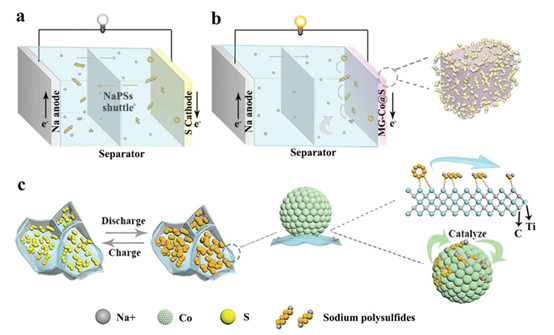
Figure 1. The principle of MG-Co@S compound inhibiting the shuttle effect during charging and discharging.
Figure 2. Microscopic morphology and physical characterization of MG-Co.
Figure 3. Microscopic morphology and physical characterization of MG-Co@S composite.
Figure 4. Electrochemical performance test of MG-Co@S in Na-S battery at room temperature.
Figure 5. CV and in-situ Raman spectra of MG-Co@S electrode and the twisting plot of symmetric devices; CV and GCD images of MG@S and MG-Co@S asymmetric devices.
Summary of this article
In this paper, the prepared 3D porous MG-Co aerogel has a three-dimensional porous structure, which can not only improve electronic conductivity, but also relieve volume expansion during charging and discharging. At the same time, the polar active surface of Ti3C2Tx and the catalytic effect of Co nanoparticles can effectively inhibit the shuttle effect and enhance the electrochemical reaction activity. The assembled room temperature Na-S battery has outstanding electrochemical performance, has a capacity of 705 mAh g-1 at a current density of 0.1 C, and can retain a specific capacity of 428 mAh g-1 when the current density is increased to 5 C. The higher electrochemical performance produced by the MG-Co@S electrode proves the importance of this integration strategy.
Literature link:
DOI: 10.1039/D0QI00939C
This information is sourced from the Internet for academic exchanges only. If there is any infringement, please contact us to delete it immediately.




